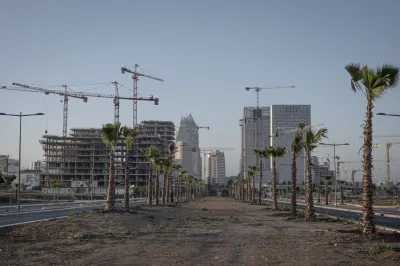Microfinance Policy Forum for the Arab World
Syria recently introduced new legislation allowing for the establishment of “social financial banking institutions” such as finance companies or banks to offer a range of financial services, including deposits. So it was a great place for CGAP to host this year’s Microfinance Policy Forum for the Arab world in collaboration with Sanabel Network (the microfinance network of the Arab countries). The Forum is a unique opportunity for officials from central banks and government ministries from across the Arab world to exchange experiences and knowledge with peers. Dr. Adib Mayaleh, governor of the Central Bank of Syria, made opening remarks in which he presented the recent legislation.
Arab microfinance is diverse. Although the region as a whole has grown at about the same rate as global microfinance since 2006, individual country experiences have varied greatly. Morocco, Egypt, and Jordan have exhibited strong growth while other countries have seen very little growth and some countries (such as Algeria) have almost no microfinance sector at all.
Though many countries in the region have relatively developed financial sectors, this development has not translated into increased financial inclusion. “In MENA, there are fewer loan accounts, accounts (except Sub-Saharan Africa) and branches (except East Asia and Sub-Saharan Africa) per population than any other region of the world and only an estimated 15% of microfinance demand is being met, ” said Mohammed Khaled, MENA regional representative at CGAP.
Clearly, there is much to be done. Microfinance in MENA is limited in scale, products, and capacity and very few MFIs offer financial services beyond basic credit. Investors are discouraged by a predominantly NGO-based model and by the lack of regulatory and supervisory clarity. Government-owned institutions such as state banks, development and employment funds, savings banks, and post offices continue to be primary providers of both credit and non-credit services for low-income households in the region.
The 2009 Policy Forum in Beirut attracted 23 regulators from 11 Arab countries and was the first such gathering of Arab regulators on financial inclusion. This year, the Forum attracted 25 regulators representing all countries of the MENA region as well as observers from AFI, USAID, IFC, KfW, GTZ, World Bank, and UNDP.
Mrs. Shamshad Akhtar, World Bank Vice President for the MENA region delivered the keynote address, a call to action for government policymakers. While a number of steps are already being taken by some regulators in the region, she said, there is much more government can do to promote financial inclusion including improving financial infrastructure, and providing low cost access through mobile phones and ATMs:
“We need to set our sights higher than a well-regulated and sound financial sector that reaches only a minority of people and firms. We should aim for well-regulated and sound financial sectors that reach a majority.”
The event featured discussions of the wide array of regulatory challenges confronting regulators of the region including:
(i) The advantages and risks of the deposit-taking model: In Egypt deposit-taking services are not allowed, whereas Syria allows MFIs to offer savings services, as Nisreen Karkotly, Head of Research Department at the Central Bank of Syria, pointed out because “deposit-taking institutions are recognized to be more resilient to crisis than non-deposit taking ones as customer savings represent a stable and reliable source of funding.”
(ii) The transformation of NGO-MFIs into commercial institutions: Fouad Abdelmoumni, former Director of Al Amana and member of CGAP Executive Committee, urged MFIs to consider the advantages of transforming from non-profit NGOs into commercial entities: “By transforming, Arab MFIs could access commercial funding and a legal charter to provide a broad range of services helping them achieve their outreach objective on a sustainable basis.”
(iii) Risk management in times of crisis: My colleague Xavier Reille, Lead Microfinance Specialist at CGAP emphasized the shift in microfinance risks that operated between 2008 and 2009: from staffing and capital availability in 2008, to credit risks and macro-economic trends in 2009. He also presented a fictional case study to help microfinance regulators react in uncertain environments, as the microfinance sector is facing uncontrolled growth in several MENA countries.
(iv) The potential for mobile banking and other forms of branchless banking to increase financial inclusion: in an interactive session, Michael Tarazi presented the various existing models of branchless banking with examples from Brazil, Kenya, and other countries.
Some themes that emerged from the discussions were:
- The huge potential of branchless banking to provide low cost access to people
- The need for a nuanced approach to regulation
- Better financial infrastructure and support mechanisms
- A collaborative approach to bringing in the various financial inclusion stakeholders within governments
- More collaboration with regulators within and outside the region possibly through
- Engagement with the Association for Financial Access (AFI).




Add new comment